Galicia’s dramatic, green, coastal cliffs are not what people imagine when they think of Spain. This unexpected landscape is one of the reasons I adore this part of the country. Specifically, A Coruña. If given the opportunity to visit, consider spending at least a day in A Coruña, Spain.
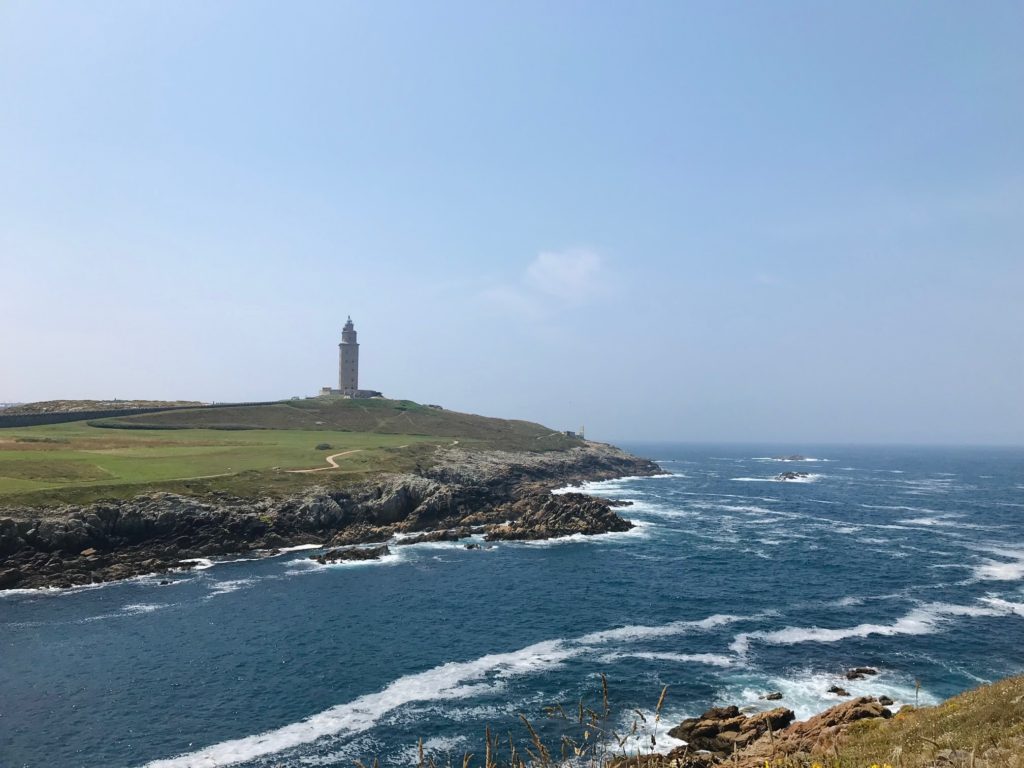
This article may contain affiliate links through an associate’s program. If you purchase an item using one of my links I will receive a small commission, with no extra cost to you.
A Coruña, Spain
A Coruña Spain is an ancient city, with evidence supporting its existence since the 2nd century B.C.
This Spanish port city is the largest city in the province of Galicia. Its cultural influences are a mixture of Celtic, Roman, and Phonecian. All of which can be easily observed throughout the streets of A Coruña.
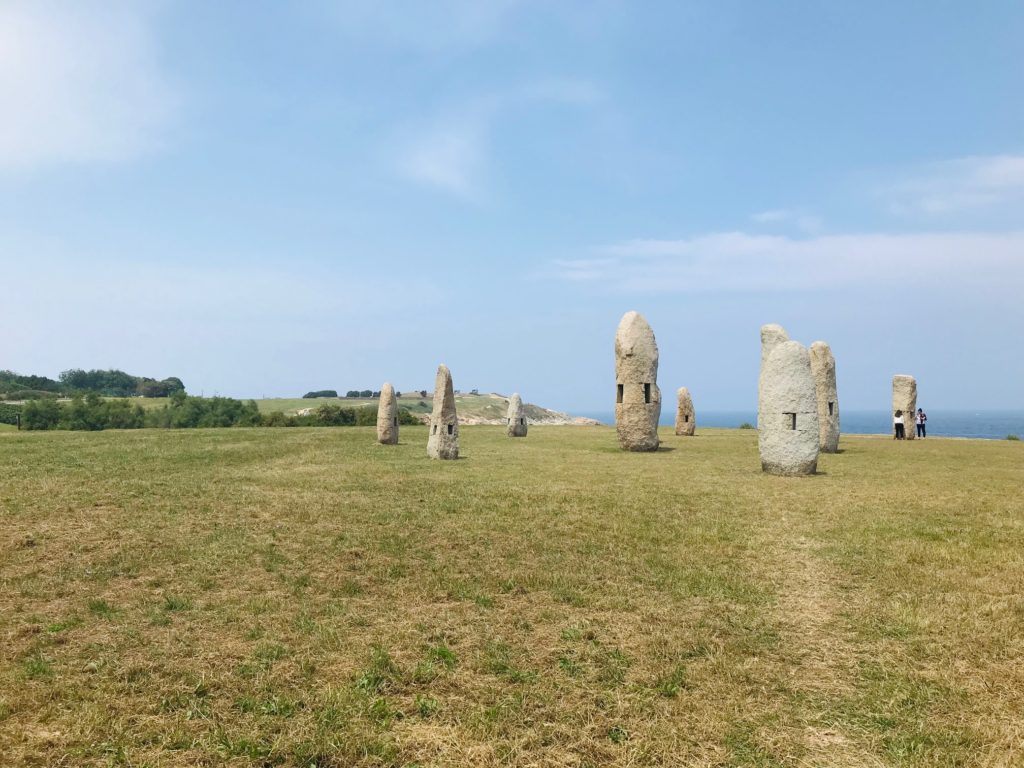
Why is it called A Coruña?
There is no certain answer to this question, however, there are several predominant theories as to where the name A Coruña evolved from.
The first theory is that it is an alteration to the word crown, in Galician the word for crown is Coroa, while in Spanish it is the corona.
An alternate theory is that the name comes from the Scottish Celtic explorers who had been known to survey the Galician coast. The Scottish Gaelic term cork orrunach literally means “harbor of the brave men”.
As this area changed and adapted from different cultural influences the name also shifted into this current day version.
Is La Coruña the same as A Coruña?
Yes. La Coruña is the Spanish pronunciation of the city name while A Coruña is the pronunciation in the Galician language. A Coruña is now the official name according to the Government of Spain.
Is Galician a language?
Yes. The Galician Language is officially known as Gallego and is mostly spoken in the region of Galicia. It actually is closer to Portuguese than it is to Spanish.
Where is A Coruña port in Spain?
The cruise ship port here is located just a 7-minute walk from the historic center of the city and one of my favorite plazas, Praza de María Pita.
A Coruña is located in the northwestern corner of Spain, in the Provence of Galicia.

How big is A Coruña?
The city is about 15 square miles (roughly 24 square KM). With 244,850 residents It also has one of the largest populations in Galicia.
However, if you are looking to visit A Coruña you will most likely spend your time in the historic city center, which is manageable and easily covered on foot.

What is A Coruña known for?
When I think of A Coruña, I think of delicious fresh seafood and stunning ocean views in addition to several notable sites.
Beautiful glass-enclosed balconies that line the coast, stand out from the “typical” architecture of Spain. These homes are referred to as the Galerías and they have earned A Coruña the title of the “Glass City.”
Faro de Hercules is the oldest operational lighthouse in the world and the city’s most notable landmark.
For fashion lovers, it also is the birthplace of the international fashion retailer, ZARA!
A Coruña Travel Guide
I spent one full day in A Coruña as part of a two-week trip through Galicia and Asturias. I do wish I had some more time here to explore the surrounding areas.
Where to Stay
When traveling I am always looking for the best deal, especially when it comes to hotels or hostels, and for $35 a night (for a 2-person room) you really can’t beat the Pensión Las Rías. It was extremely clean, secure, and close to everything.
Things to do in A Day in a Coruña
The historic city of A Coruña itself is super manageable to cover in a day, especially if you start early!
One of my favorite ways to see the City is on a FREE (tip based) Walking tour. These will take you to all the sites and give you all the important information about the city. Not to mention, the guides are always amazing!
Reserve your spot on a free walking tour here!
Breakfast by the Sea
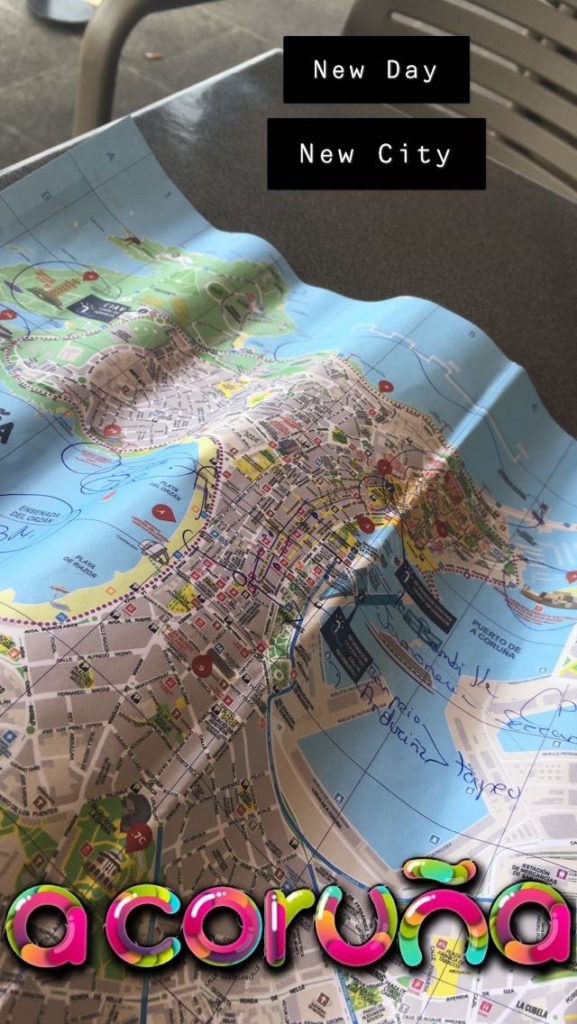
Never skip breakfast, especially in Spain. Breakfast is a time for coffee, pastries, and to plan your day.
I began my day with breakfast from Farggi. This ice cream shop is located on the promenade right across the street from the marina. This means it has great views and a nice ocean breeze.
Here I enjoyed a typical Spanish breakfast: pan con tomate, churros con chocolate, fresh-squeezed orange juice, and my favorite, a café bombón (espresso with sweetened and condensed milk).
Our spot on the terraza was a perfect place to plan out our adventures of the day.
Parque de Mariña
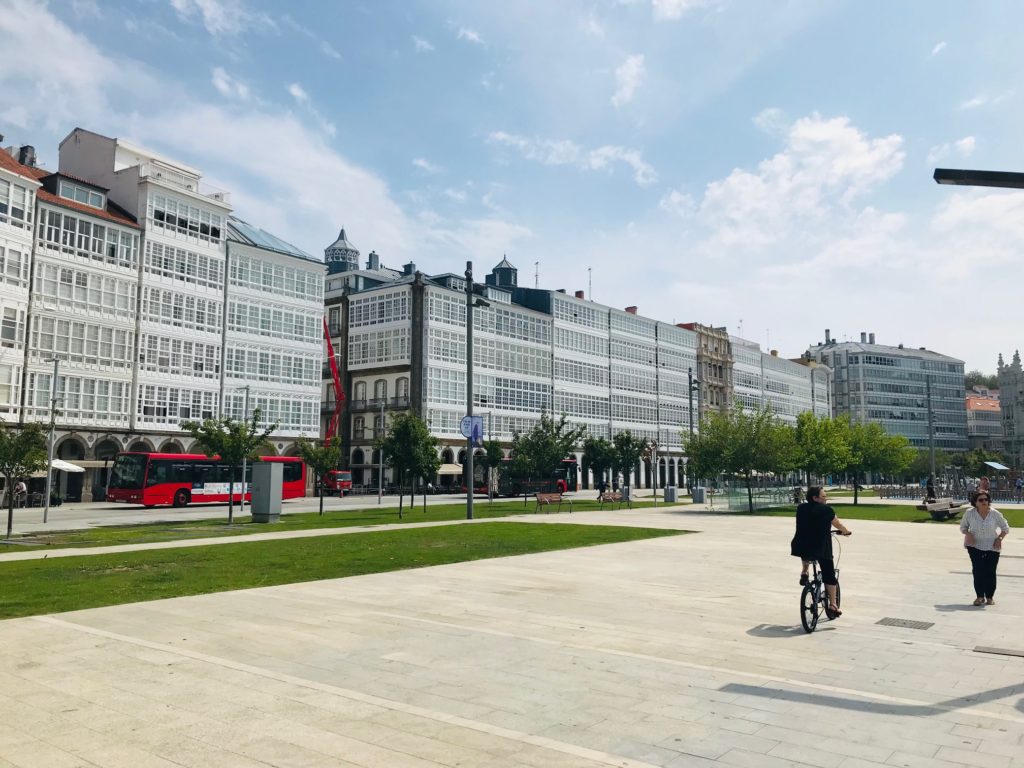
After breakfast at Farggi take a stroll down Avenida Mariña, here you will get the best view of the gorgeous glass front buildings that are responsible for A Coruñas nickname of the “Glass City.”
Across the street is Parque de Mariña which, if you are lucky, will be hosting some sort of event or market!
Praza de María Prata
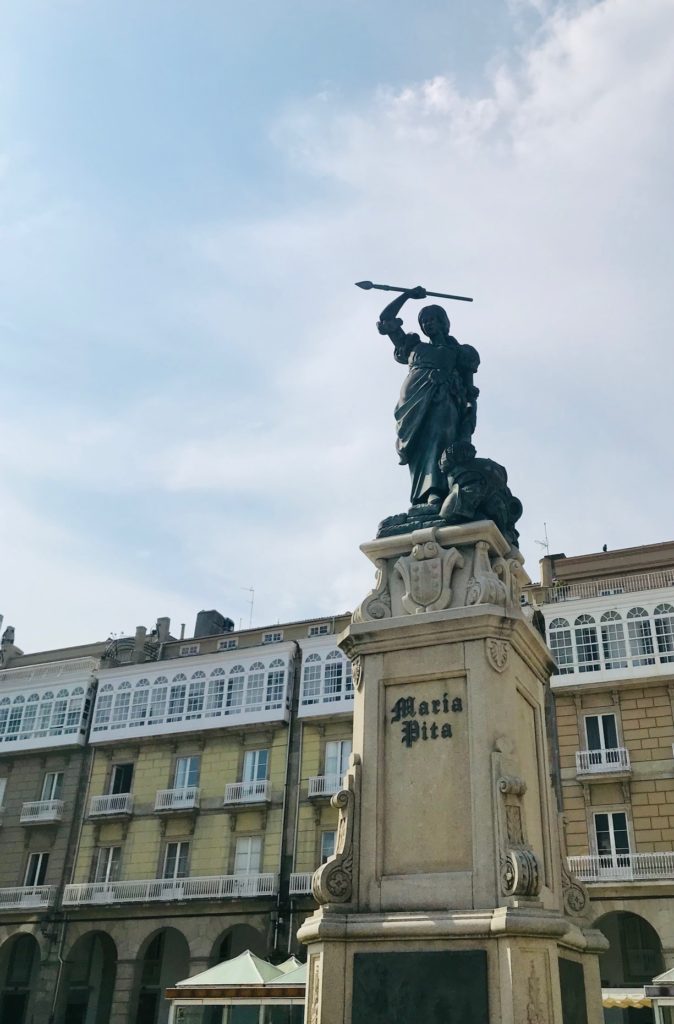
From Avenida Mariña, tuck back into the buildings and walk just one block to admire one of the most impressive plazas in the city.
The buildings open up to a large square lined with gorgeous buildings, with the famous glass balconies.
Praza de María Prata is dedicated to María Prata. City heroin and wife of the Spanish Army Captain during the 1586 English invasion.
During the battle, her husband was killed. When she saw him fall, she then took the spear holding the English flag and killed the English commander with it. This action boosted Spanish morale enough to lead a successful charge to save the city of A Coruña.
If you are interested in learning more about this local hero, you can visit the museum dedicated to her in the old town, Casa Museo María Prata.
Concello da Coruña
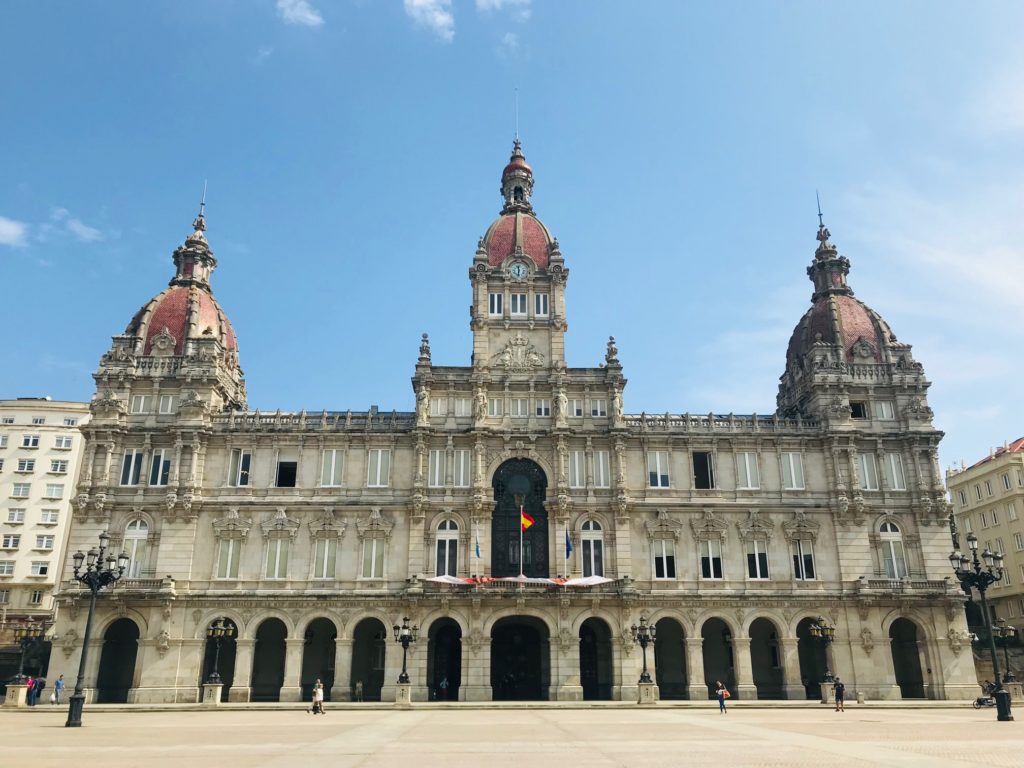
On the other end of Praza de María Prata sits Concello da Coruña. This is the city hall building and it really is quite the spectacle.
The bronze domes towering over the square are absolutely stunning. If you arrive early enough you will likely have the square to yourself.
Cidade Vella
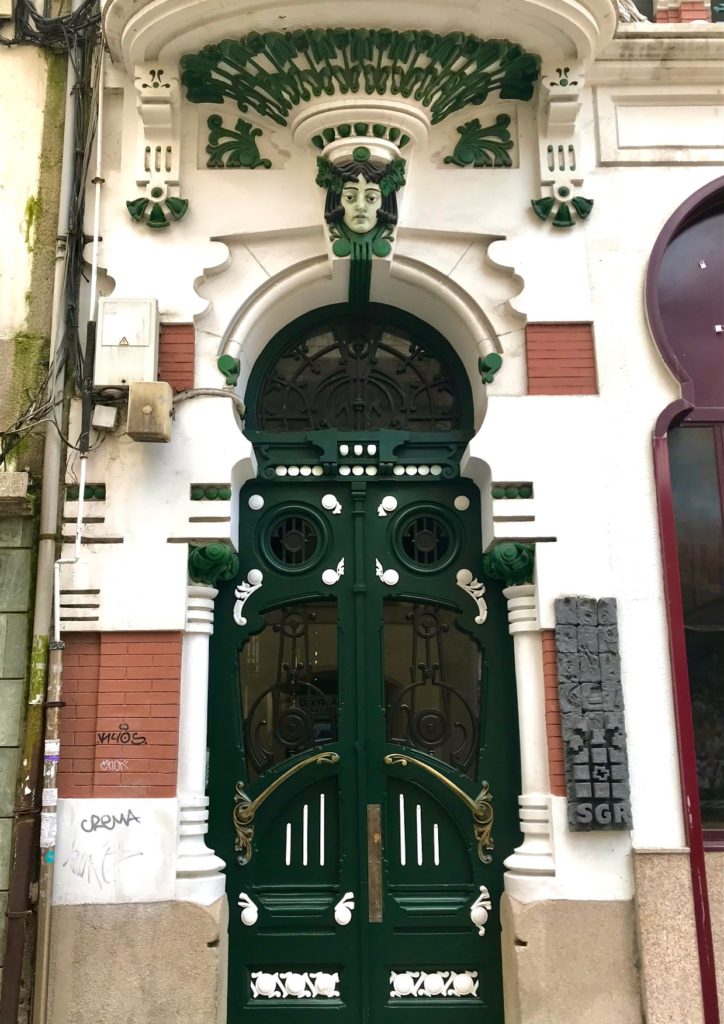
Exit the Praza de María Prata towards the office of tourism. This street will lead you into the old city or Cidade Vella.
Take some time to wind through these old streets and discover some of the charming details that make up the city.
I fell in love with all of the elaborate and interesting doors, that are large enough for giants to use.
Pazo de Cornide
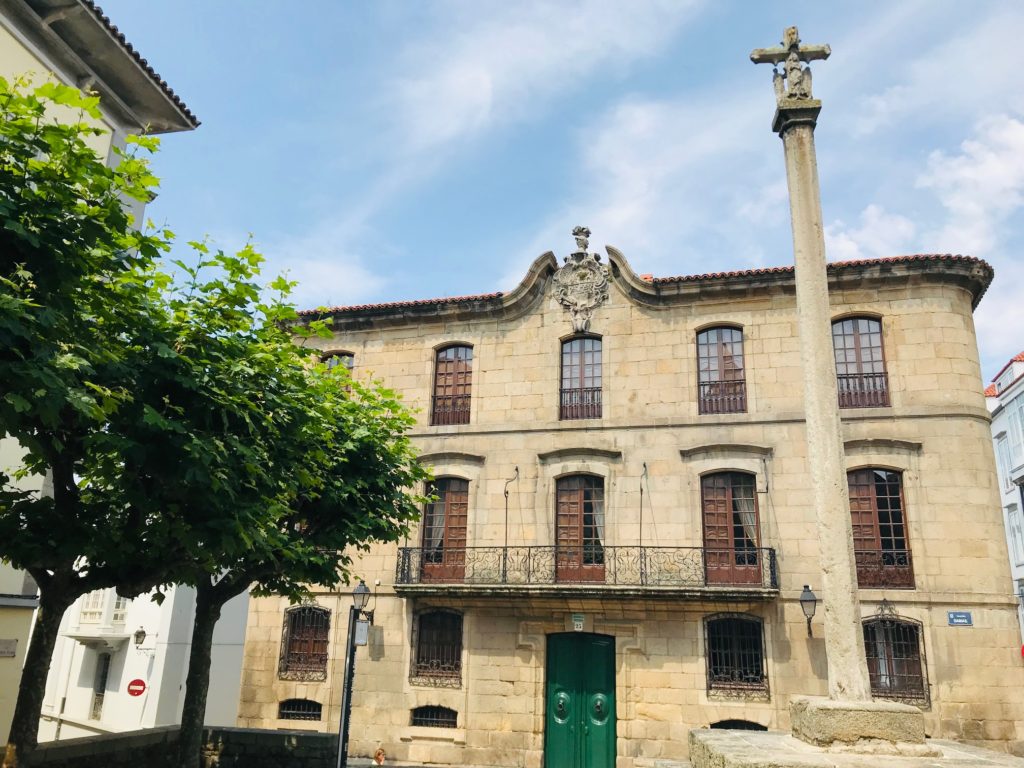
Pazo de Cornide is located in the A Coruña old town. It is a perfect example of a baroque-style Galician home.
Like others of its kind, this was home to the nobility of the city.
Pazo de Cornide was also the birthplace of José Cornide, A notable contributor to the Spanish Enlightenment period.
Colegiata de Santa María do Campo

This catholic church is from the late Roman period and was built in 1120. Making this one of the oldest existing buildings in A Coruña.
I highly recommend walking around and admiring the historic architecture.
Praza de Azcárraga

Follow the charming old streets to my favorite plaza in the entire city. Praza de Azcárraga is a tranquil, shady square complete with a life-size, guitar-toting John Lennon statue.
This is the best place to sit on a bench, listen to the live street performers who are likely there, and enjoy a coffee or fresh pastry.
Take a minute and enjoy the slow-paced Spanish lifestyle.
Igrexea de Santiago

The church of Santiago was built in the 12th century. It is a simple but beautiful church in the old city of A coruña.
A tall spire and ivy-covered walls make the temple easy to identify.
Located just outside of this church. marked by the shell of St. James is the starting point for the Camino de Santiago’s English Way.
Praza de Constitución
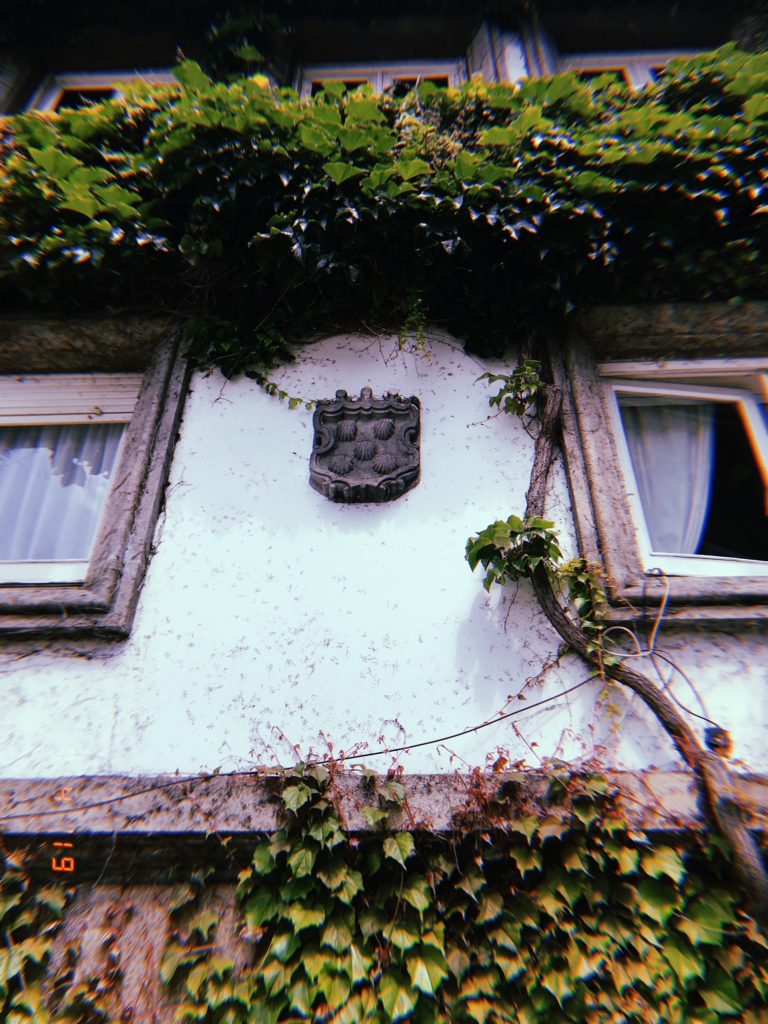
Praza de Constitución is your typical Spanish plaza surrounded by churches, historic sites, and best of all bars and restaurants.
It is also home to Pazo de Capitana which is a former royal military headquarters.
Currently, it operates as a military museum with many artifacts and information about the military history of A Coruña and Spain.
Before you leave this area I would highly recommend having a light snack or lunch.
Once you move onto the seaside walk, there are few options, and you will risk pushing your hunger into the restaurants’ siesta break.
Castelo de Santo Antón
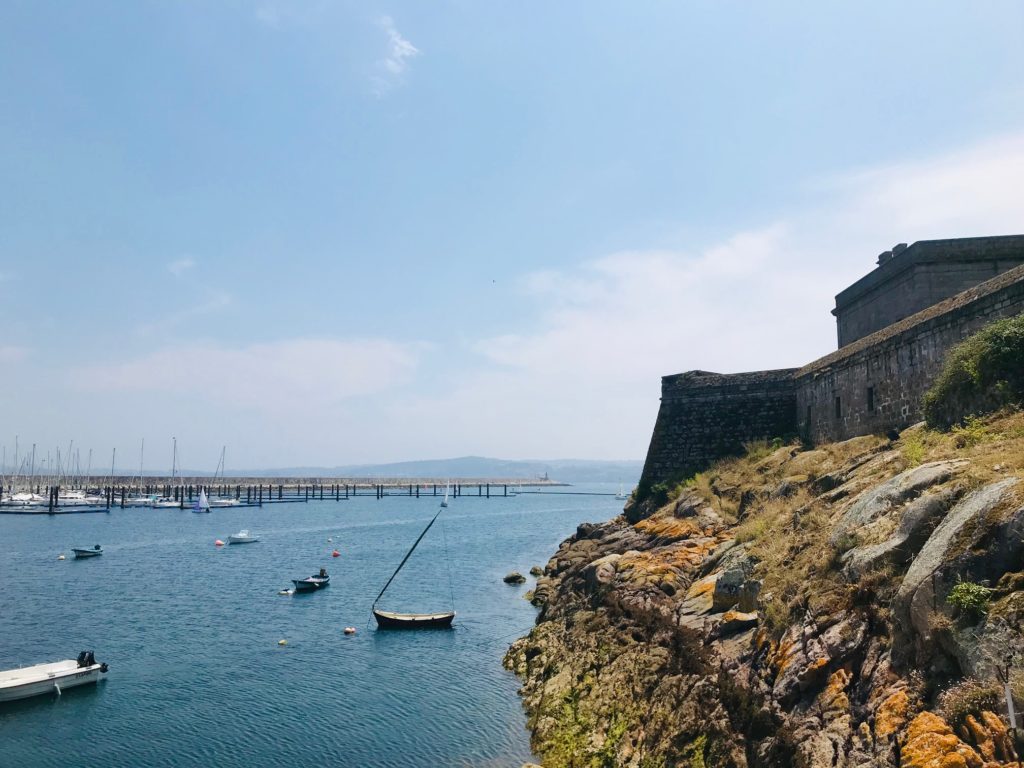
Castelo de San Antón is a 16th-century sea-fort that was constructed with two similar forts in an effort to protect the city of A Coruña.
The castle is also home to the archeology and history museum. If you are interested in visiting the interior, admission is free on Saturdays.
Paseo Marítimo
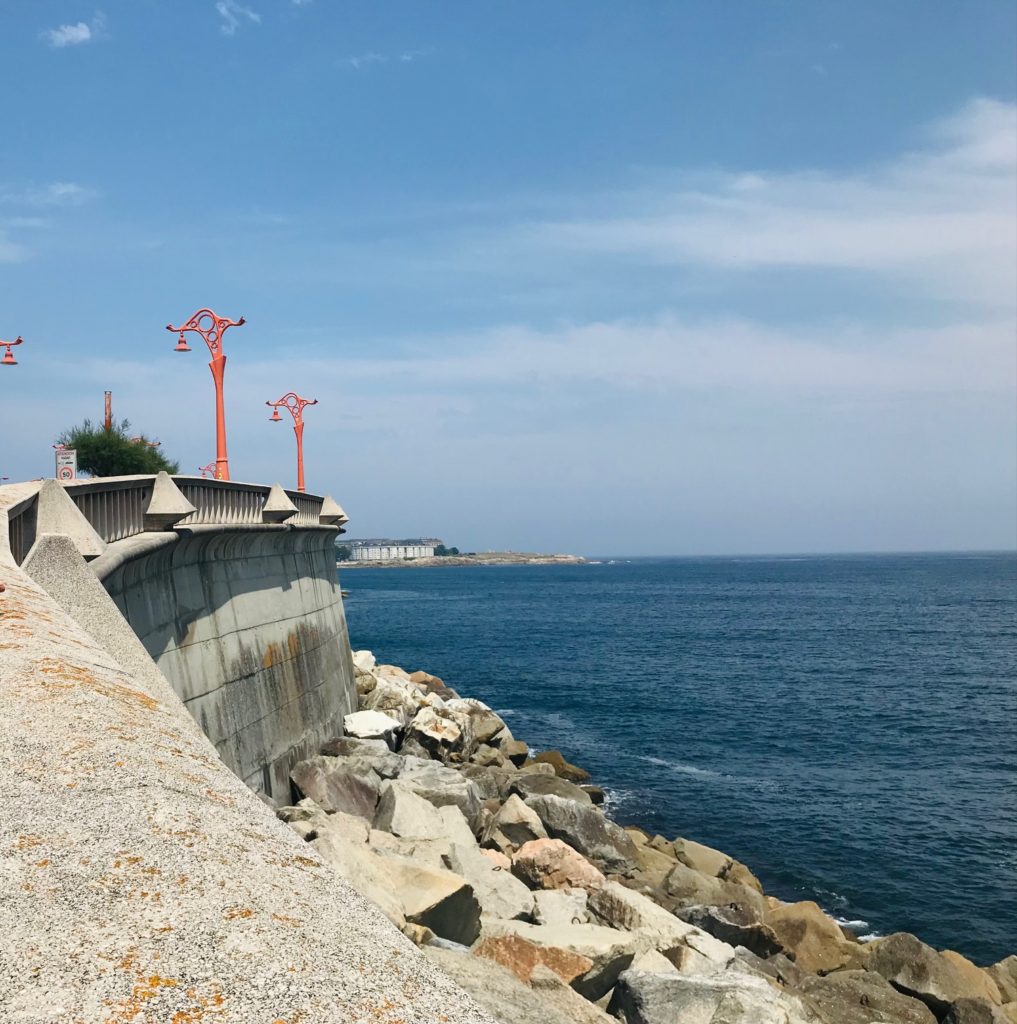
The lengthy promenade, Paseo Marítimo, stretches for most of A Coruña’s coastline. This is a perfect place for a leisurely stroll by the water.
Or perhaps a scooter or bike ride if you are looking for a faster option.
However, I really did enjoy the stroll. There is something that is so relaxing about watching the waves crash on the rocky shores.
Continue along this route until you reach the popular Playa de San Amaro.
Temple by the Sea
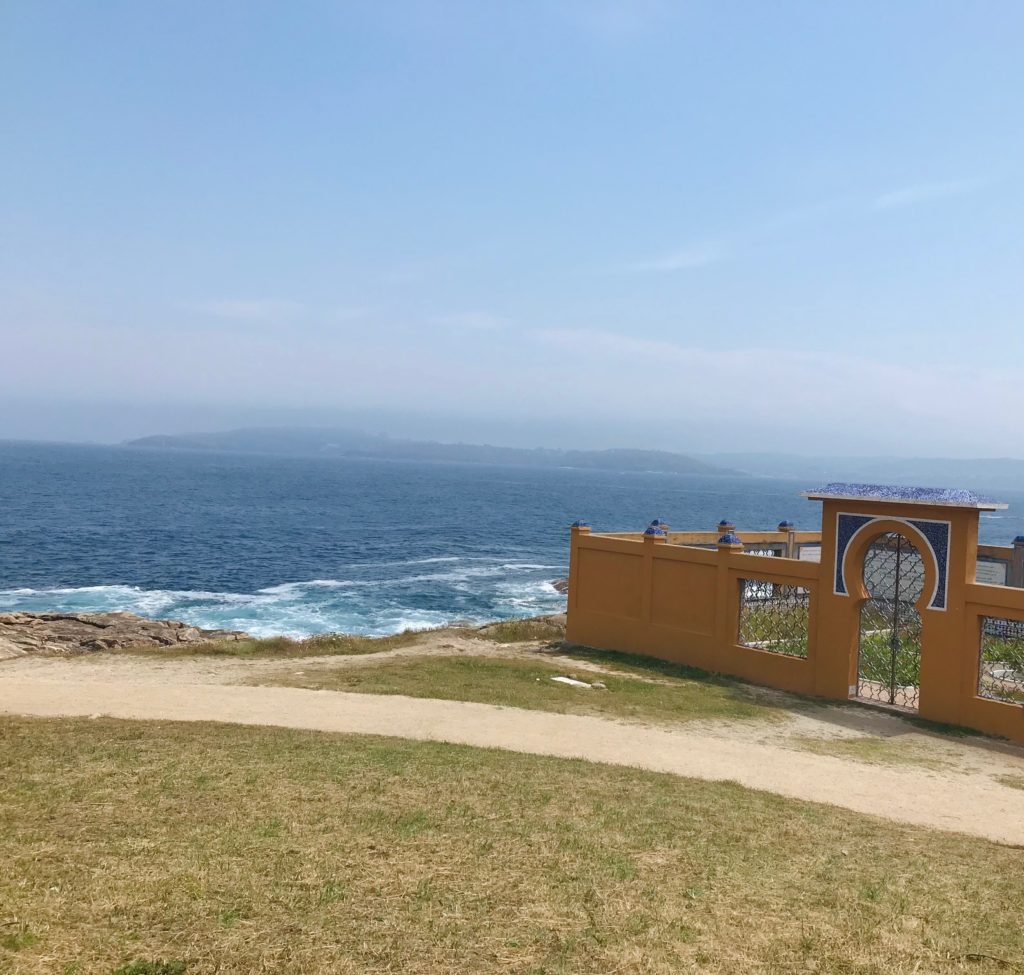
Stop at the Playa de San Amaro, or if you wish to continue on the Paseo Marítimo will take you to a dirt path. Here you can follow it towards this Arabic-style structure, surrounding a serene garden.
There are quite breathtaking views of the Ocean from this spot.
Additionally, it marks the nearby entrance of a small, hidden, nude beach called Praia do Mouros.
Parque Escultórico de Torre de Hercules
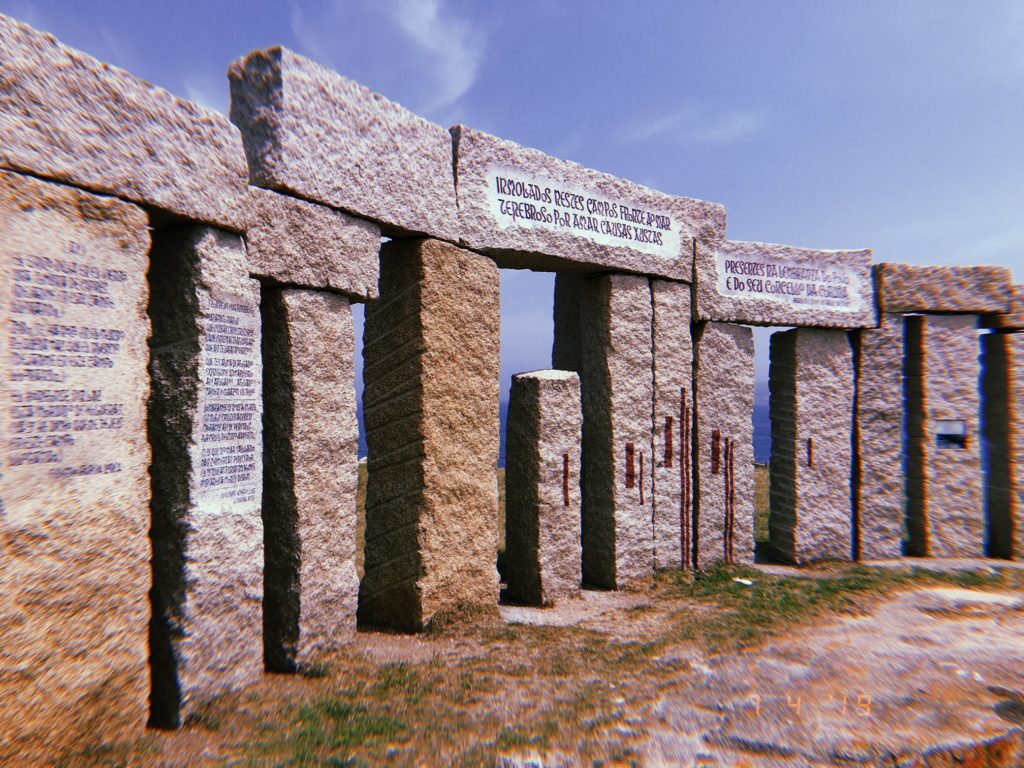
Continue along this dirt path past some incredible sculptures with equally as stunning backdrops.
This area is called the Parque Escultórico de Torre de Hercules.
The sculptures vary in materials and theme, my favorite was the Stonehenge-esqe rock formation.
In addition, the view of the tower of Hercules from here is quite impressive.
Torre de Hercules

Torre de Hercules is on every “Things to do in A Coruña” post you will read, and for very good reason. It truly is impressive.
Torre de Hercules was constructed in the 1st century to mark the “end of the world” in the Roman Empire.
From the time of its construction to the present day, it has served the same purpose. Guiding ships safely along the western coast of Spain.
Rosa dos Ventos
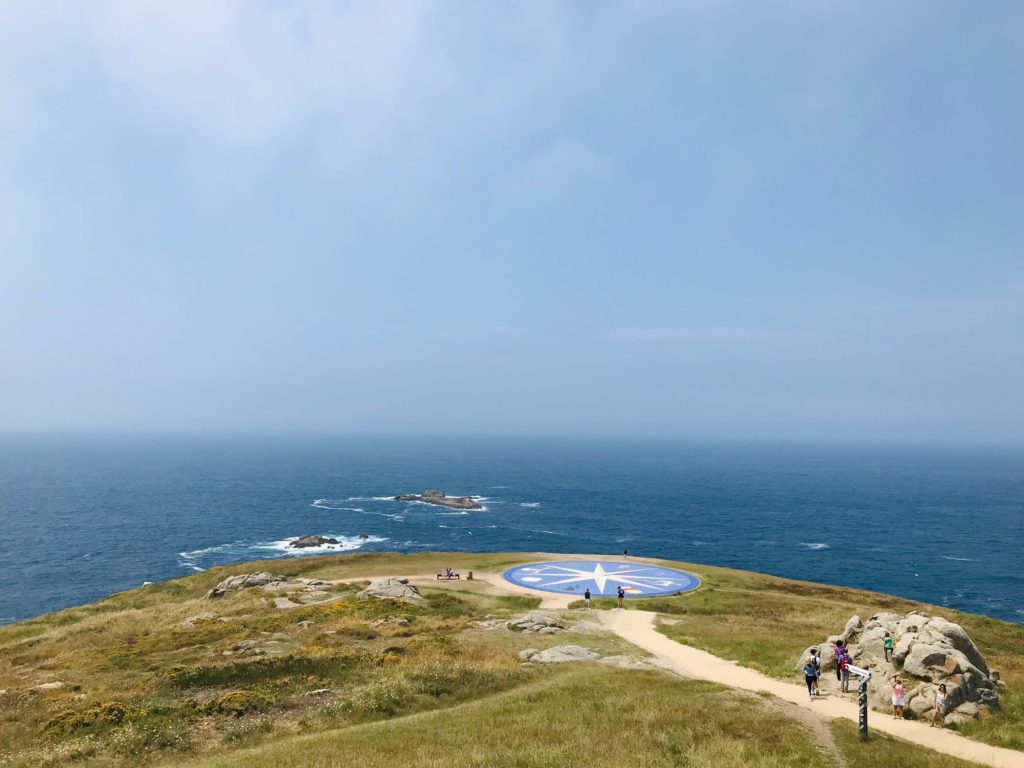
At the base of the Torre de Hercules, you can find the Rosa dos Ventos.
The compass is located directly on the coast and is adorned with symbols that call on A Coruña’s ties with the Celtic nations. Each figure around the compass represents a different part of the Celtic culture. Read more about this compass here.
Cidade Alto
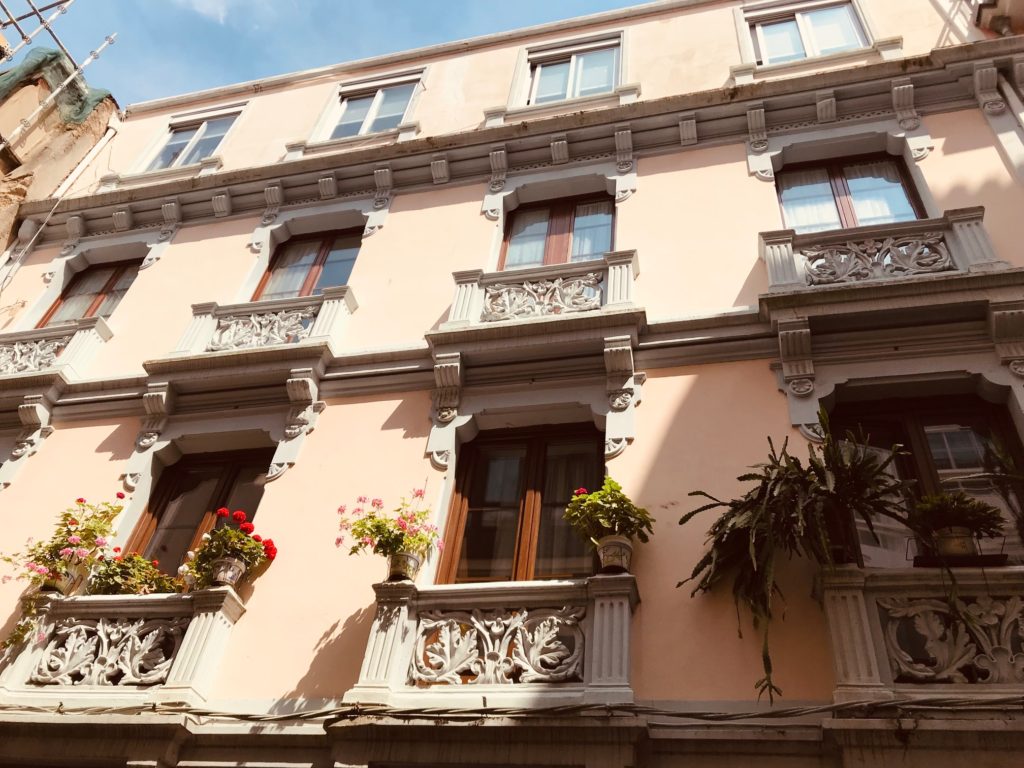
Cidade Alto is located near the Torre de Hercules.
After your long walk and a long afternoon of exploring, wander around Cidade Alto and its many seaside restaurants to grab a snack.
If a caffeine fix is what you are after, then try out a cute espresso bar called La Panela. Café bar UNI is also a good choice for traditional tapas with an ocean view.
Playa del Orzán
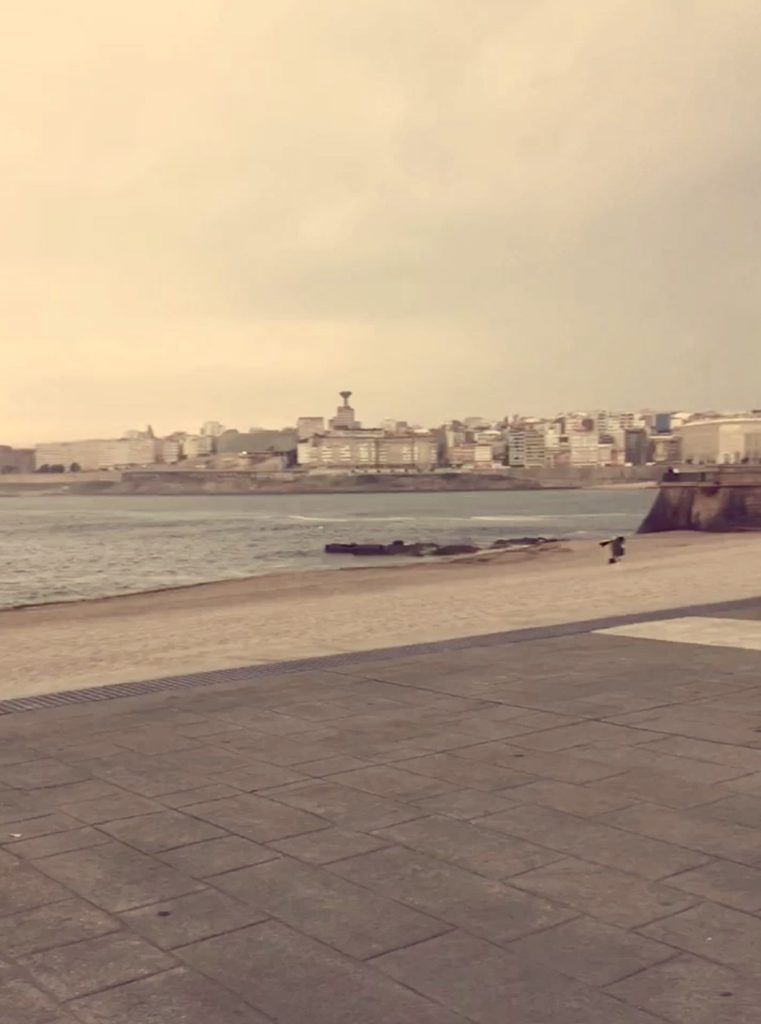
The paseo marítimo continues to the largest beach in the city.
Playa de Orzán is a perfect beach right in the middle of everything.
The white sand opens up to views of crystal clear, blue Atlantic waters, and would be a great place to spend the day.
I was impressed with how clean the water and the beach are considering its location: directly in the middle of a major city.
With a western view over the ocean, it is also a great place to take in a sunset.
World’s First Zara
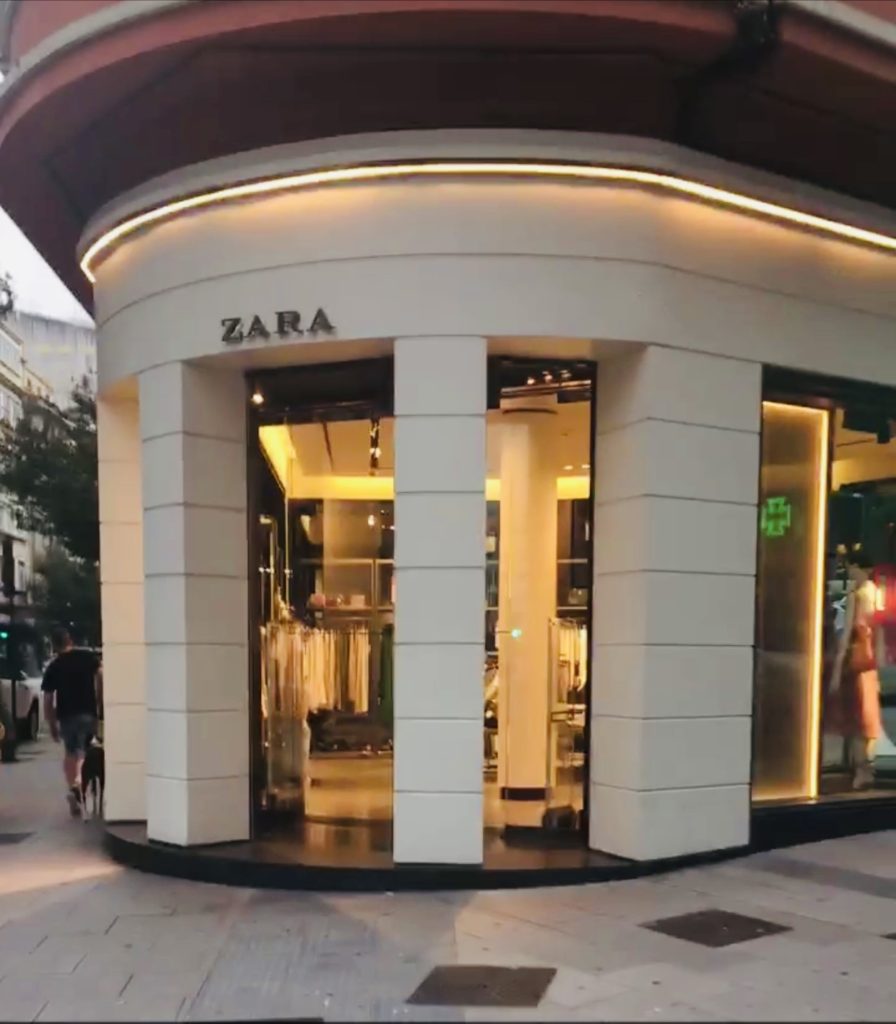
Zara was founded in 1975 and the first store was the Calle Juan Flores 64-66 location in A Coruña.
Although the store itself looks like nothing more than an average Zara, I thought it was pretty cool to visit the foundational location of such a widespread fashion franchise.
Dinner
A Coruña is definitely a food city, especially for seafood.
The best food can be found in the Cidade Vella.
Rua Galera and Rua Bailén are lined with numerous restaurants that are all open and serve food late. Be sure to take in the local cuisine here.
We ended up eating at Taberna da Galera and enjoyed every single thing we ordered!
Check out all the traditional Galician dishes on the menu at Taberna da Galera!
What are all the frogs on the street?
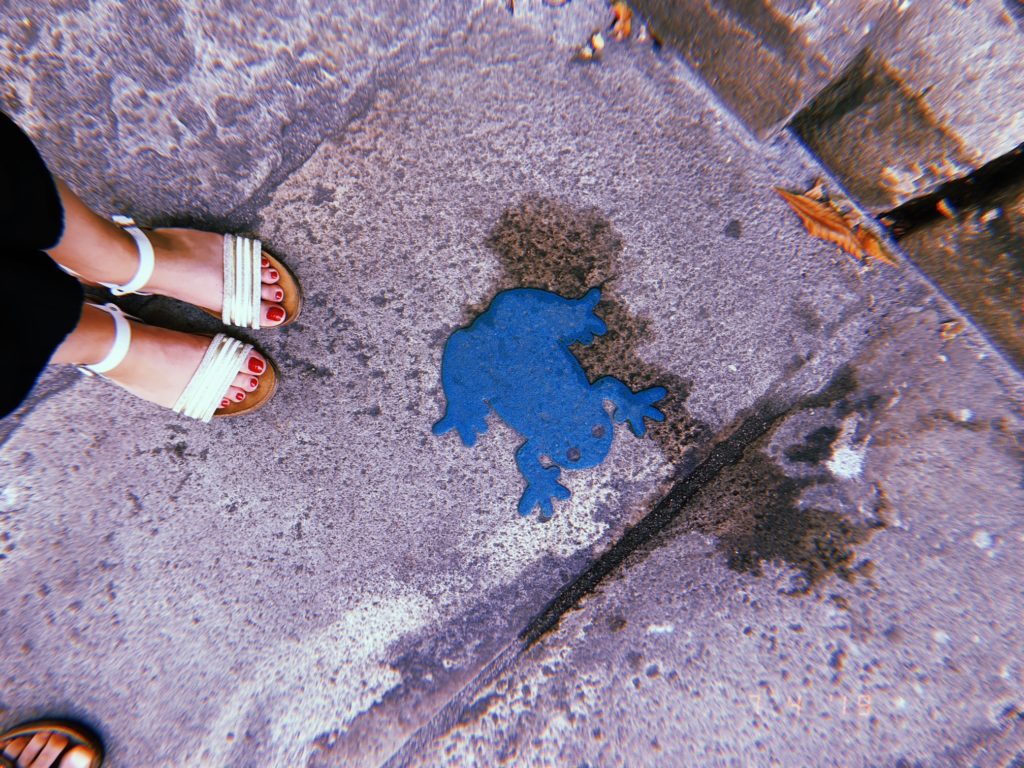
While walking around A Coruña it is impossible not to notice all of the little painted frogs on the streets.
After many different google searches, there were still no answers. However, I have sources!
My friend from A Coruña informed me that the frogs are there to mark safe routes to and from school for the kids! How adorable!
Is A Coruña worth visiting?
Absolutely. A Coruña is a stunning old city that is architecturally unique compared to the rest of Spain. You can really notice the clash and mixing of several foundational cultures. Additionally, the seaside cliffs are magnificent.
What is there to do in A Coruña on a cruise?
If you are lucky enough to dock in A Coruña for a day, I would suggest focusing on the historic city center and visiting the Torre de Hercules.
What to do near A Coruña
If you have the time I would highly recommend staying in the area of A Coruña longer. While most of the city can be seen with a jam-packed day, what makes La Coruña truly special is the surrounding area.
This part of Spain is filled with dramatic seaside cliffs, gorgeous beaches, and secluded lighthouses.
Faro de Mera
Just 17 km from the center of A Coruña is the town of Mera. Mera is home to some stunning beaches. However, its most stunning feature is its lighthouse.
The Faro de Mera sits high on a secluded cliff. From the lighthouse, you have a sweeping view over the city of A Coruña and can even see the Torre de Hercules in the distance. This is a breathtaking place to enjoy a sunset.
Ruta de Los Faros

The Ruta or Camiño de Los Faros is a 200km trail that outlines the Galician Coast. This trail can be hiked or visited by car.
Along the route, you can find all the significant lighthouses, attractions, and unbeatable views of the coast.
This part of Spain truly feels special, and like a well-kept secret. The scenery and culture are unlike any other part of the country. Its quiet brilliance makes it feel extra special to me.
To learn more about the Ruta de Los Faros click here.
Accessibility
Most of these additional activities would be made much easier with access to a car.
If you are looking to rent a car, Sixt is a very straightforward company and is located conveniently in downtown A Coruña. Additionally, I have found their associates very helpful.
I have rented from this company several times and have never felt they were trying to play tricks on me, or talk me into something I didn’t need (the way other rental car companies tend to do.)
Does it snow in A Coruña?
It has snowed in the past however snow is not common. A Coruña typically has milder weather than most of Galicia, due to its location on the coast.
A Coruña’s winter is from December to February the average temperature is around 10 degrees celsius which is about 50 degrees Fahrenheit.
Other Places in Galicia to visit
Galicia has so much to offer and is incredibly rich in history. Be sure to spend some time exploring this Comunidad.
Santiago de Compostela
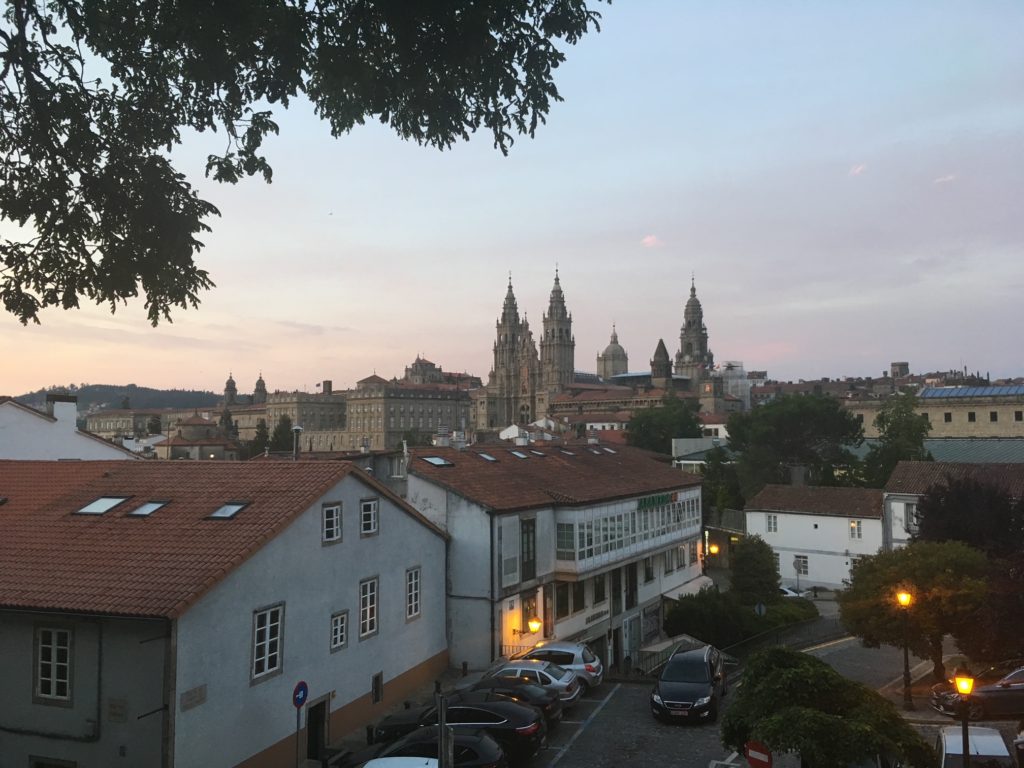
Santiago de Compostela is just a short train ride from A Coruña. The two cities are also connected by the English Way. A hiking trail that is part of the much larger Camino de Santiago.
The ancient streets and historical significance make Santiago de Compostela a must-visit, especially if you are nearby!
Read all about how to spend a day in this marvelous city here!
Vigo/ Islas Cíes
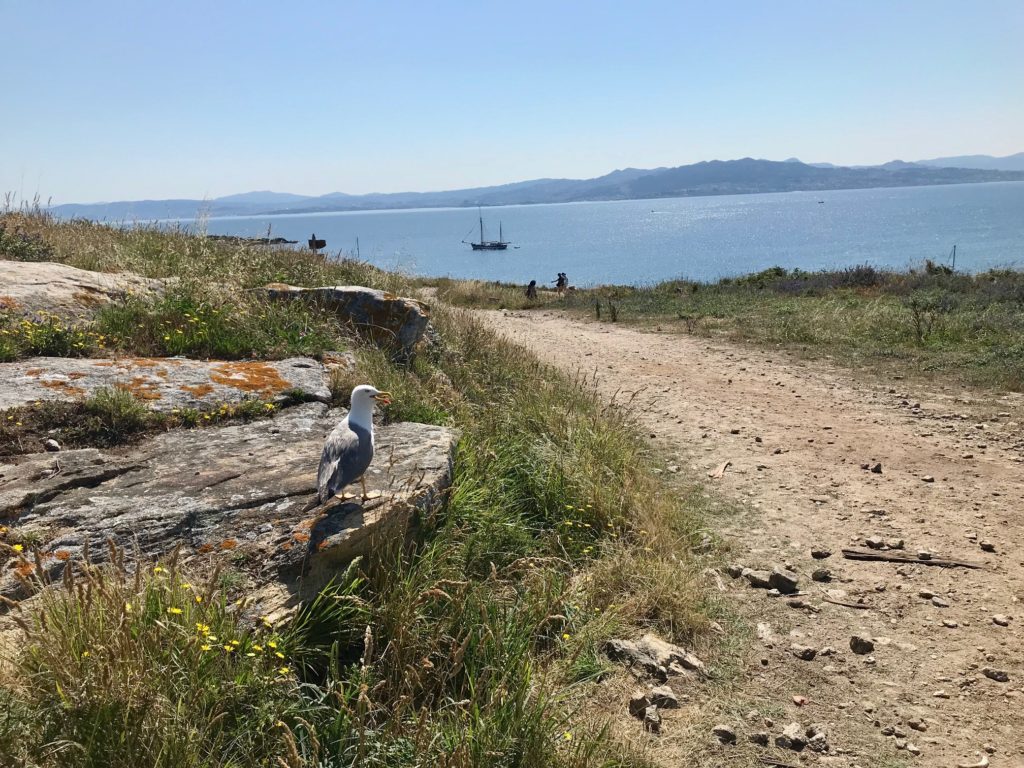
Vigo is a smaller city that acts as one of the gateways to las Islas Cíes.
Las Islas Cíes are a hidden Atlantic archipelago that acts as a nature preserve for a wide variety of marine wildlife.
The waters are crystal clear, the views are stunning, and the seagulls are vicious!
Interested? Learn all about visiting the Islands here!
Playa de las Catedrales

Playa de las Catedrales is one of my favorite beaches in the world!
The beach sits on the northern coast of Spain just a 1-hour 30-minute drive from La Coruña.
If planning on visiting the beach be sure to plan according to the tide times, as you can only visit during low tides.
Exploring the wave and wind-shaped rocks and hidden caves was a true highlight of my time in Northern Spain.
Thanmks for sharing your info. I truly appreciate ykur eforts andd I will bbe waiting foor you furtherr post thaks once again.
Beautiful City, One set of Grandparents came from the town of Mera, across the bay.
Thanks Holly. H have a free day in my September trip to Spain, will be in Santiago de Compostela, and this has my name on it.
Thanks Holly. Have a free day in my September trip to Spain, will be in Santiago de Compostela, and this has my name on it.
Have you ever seen Sea Glass here?